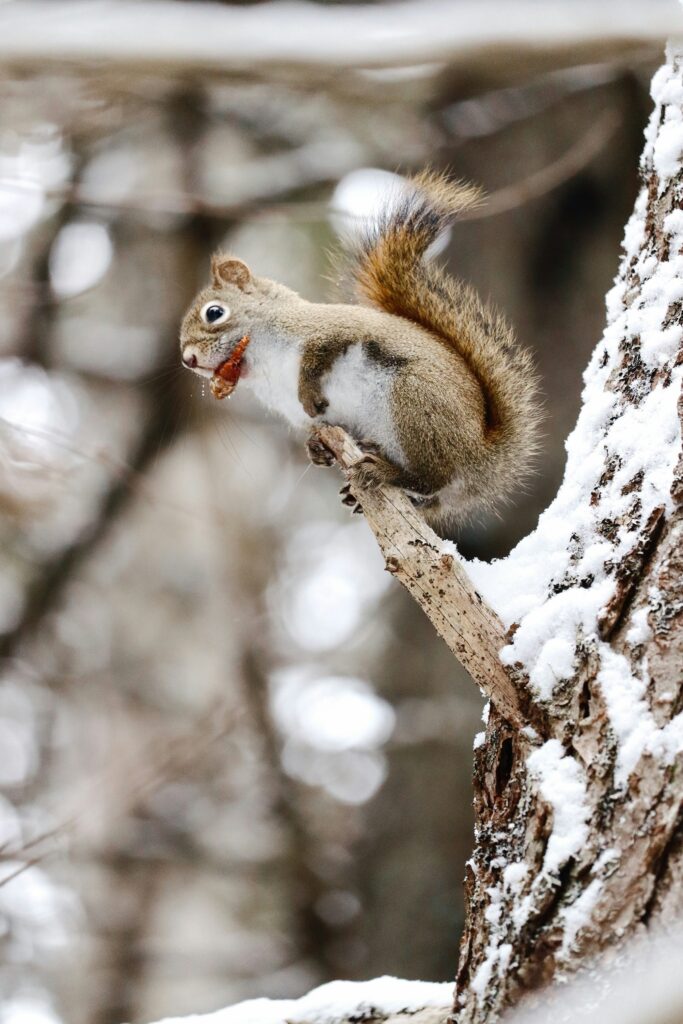
Hey everyone,
As we’re watching the last of the autumn leaves fall here in Canada, there’s no denying what’s just around the corner. The air has a distinct chill, the days are getting shorter, and we’re all starting to think about digging out our warmest coats and boots. For us, winter means cozying up indoors with a hot drink. But for our wild neighbours, it’s the start of the year’s greatest challenge: survival.
From the chickadee that flits past your window to the fox that tiptoes across a frozen field, every animal has a strategy for making it through the harsh Canadian winter. And while they are remarkably resilient, a few small, thoughtful actions from us can make their tough journey just a little bit easier.
The Winter Struggle is Real
Imagine having to find food when it’s buried under a foot of snow, or a source of water when everything is frozen solid. That’s the daily reality for wildlife in the winter. Energy is everything. Every calorie an animal burns searching for food or escaping a perceived threat is a calorie they need to stay warm. For many, especially the young or the old, the winter months are a precarious balancing act.
While our first instinct might be to put out food for everyone, it’s important to know that helping requires a thoughtful approach. Sometimes our best intentions can accidentally cause more harm than good.
How You Can Actually Help
Ready to be a winter wildlife hero? It’s easier than you think. You don’t need to be an expert—just a considerate neighbour.
- Be a Friend to the Birds: Winter is toughest on our feathered friends. You can make a huge difference by setting up a bird feeder.
- Best Food: Black oil sunflower seeds are a fantastic, high-energy choice for a wide variety of birds. Suet cakes are another great option, providing essential fat.
- Keep it Clean: Regularly clean your feeders to prevent the spread of disease.
- Offer Water: A source of fresh water is a huge help. Consider a heated bird bath—it will become the most popular spot in the neighbourhood!
- Create Natural Shelters: Instead of tidying your yard completely before the first snowfall, consider leaving a little “wild” space.
- Build a Brush Pile: Piling up fallen branches and sticks in a corner of your yard creates a safe, sheltered spot for small mammals like rabbits and voles, as well as birds, to hide from predators and the biting wind.
- Leave the Leaves: A layer of leaves under shrubs or in garden beds provides insulation for the ground and a place for insects to overwinter, which in turn become food for birds in the spring.
- Think Before You Feed (The Big Guys): It can be tempting to leave out food for animals like deer or raccoons, but this often leads to serious problems. It can make them dependent on humans, lose their natural fear, and congregate in large numbers, which helps spread disease. In many parts of Canada, it’s also illegal. It’s best to let wild mammals forage for themselves.
- Check Your Car: On bitterly cold mornings, a car’s engine can seem like a warm, inviting shelter for outdoor cats or small wildlife. Before you start your car, give the hood a couple of gentle thumps to give any temporary residents a chance to escape.
This winter, as you’re enjoying the quiet beauty of a snow-covered landscape, take a moment to think of the creatures weathering the storm outside. By providing a little food, water, and shelter in the right ways, we can practice a quiet compassion that helps our wild neighbours make it safely to the spring thaw.
Stay warm out there!
